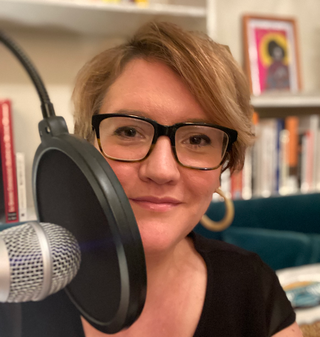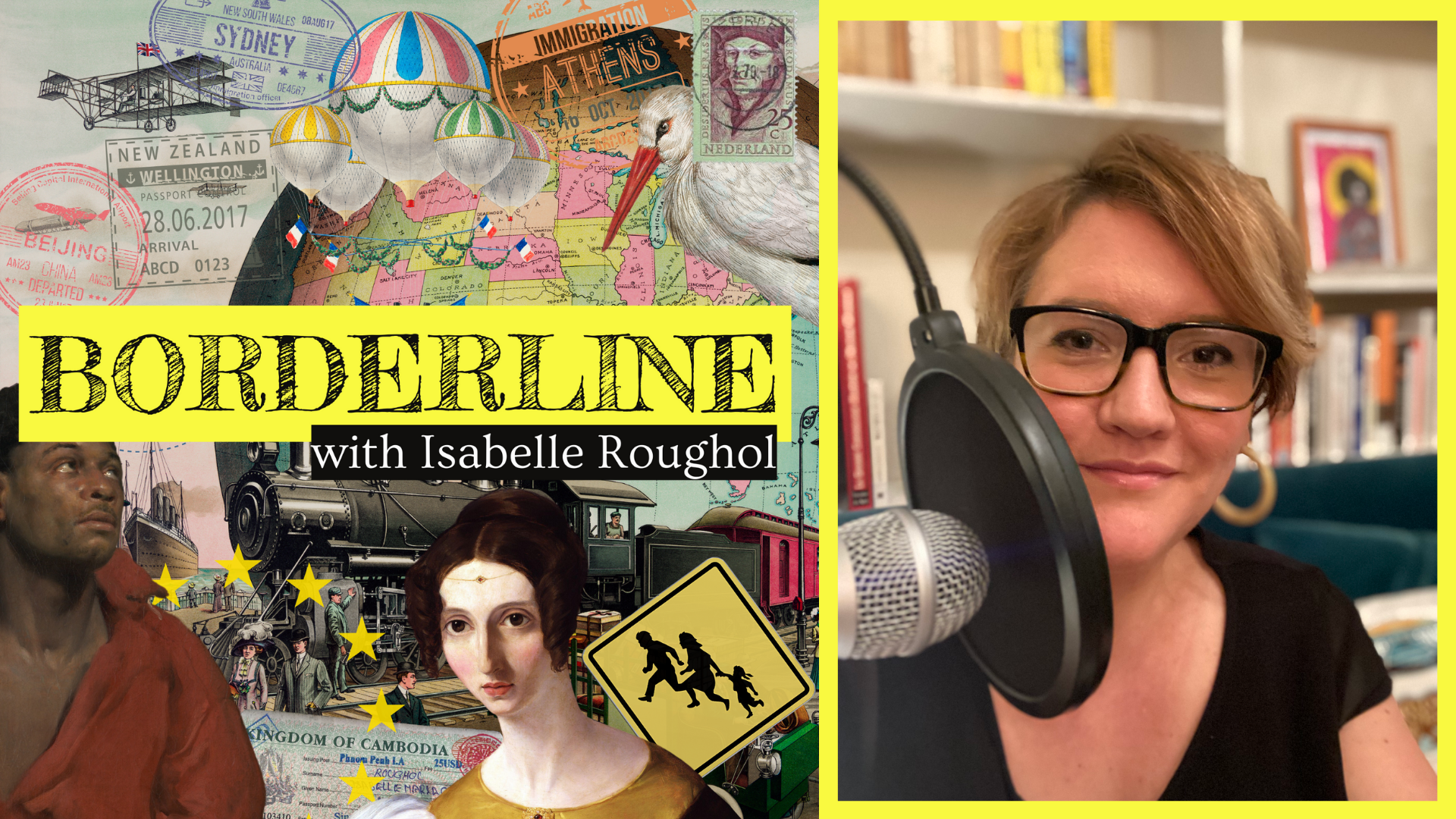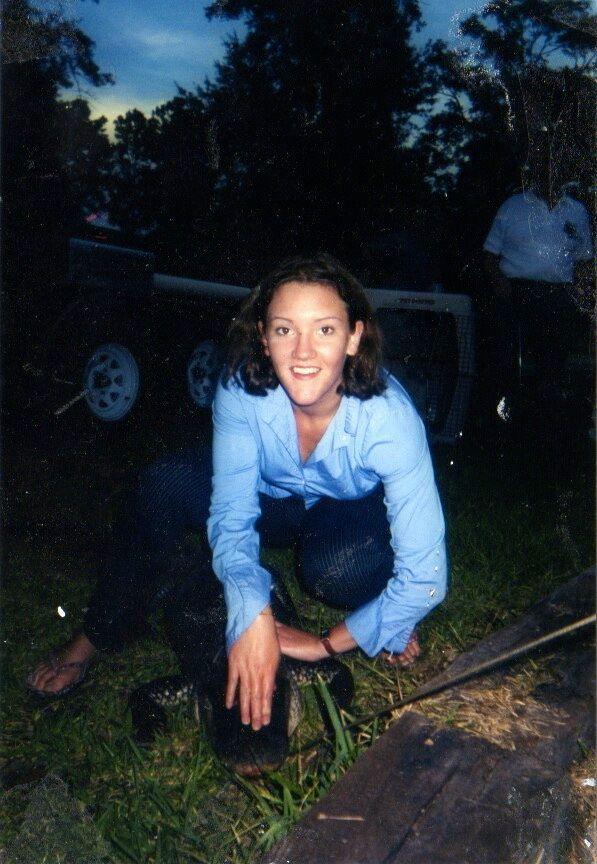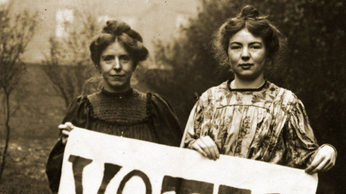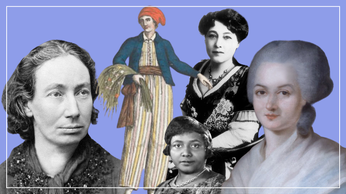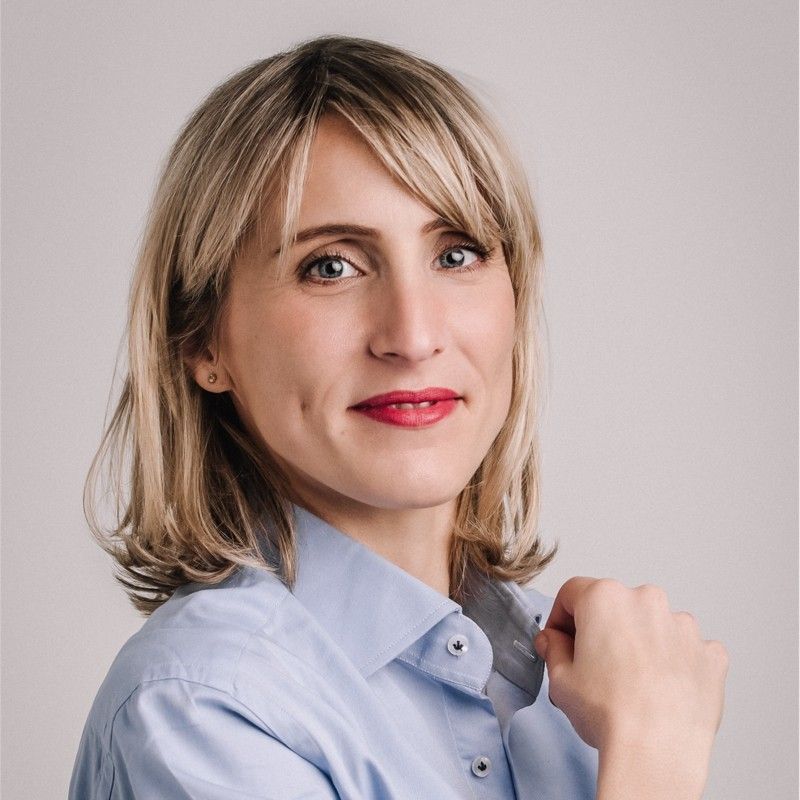
029 | Tania Cernuschi | Vaccine nationalism is winning
More than half of Covid-19 vaccines administered so far have been in high-income countries, which account for just 15% of the world population. Four out of five doses are purchased outside COVAX, the UN-backed procurement scheme that had attempted to set up fair and equal access for all countries. The most successful vaccination campaigns, in the US, UK and Israel, were unabashed us-first operations. Has vaccine nationalism definitely won? I caught up with Tania Cernuschi, team lead for global access in the World Health Organization’s vaccine department, to understand how things got so unequal and whether there’s hope to change that.
Show notes
00:27 Intro
02:36 The state of the worldwide vaccination campaign
05:57 Why can poorer countries not access the vaccine?
09:22 Should rich countries be vaccinating their young people right now?
16:04 Should vaccines be made a public good?
19:55 When will enough of the world have been vaccinated?
23:27 A note on the AstraZeneca vaccine
24:17 What we should learn for the next crisis
26:06 Outro
Sources & credits
Here’s just how unequal the global coronavirus vaccine rollout has been, The Washington Post (with helpful interactive data visualization)
India’s shocking surge in Covid cases follows baffling decline, The Guardian (21 April 2021)
'Vaccine prince': the Indian billionaire set to make Covid jabs for the UK, The Guardian (27 March 2021)
Why the UK doesn’t need a coronavirus vaccine export ban, Politico (20 March 2021)
Joe Biden hints U.S. could share more unused AstraZeneca COVID-19 vaccines, The Globe and Mail (21 April 2021)
American export controls threaten to hinder global vaccine production, The Economist (22 April 2021)
Music by Ofshane via Youtube’s audio library
Transcript
Transcripts are published for your convenience, but they are automated and not always cleaned up. Please excuses typos and occasional nonsense, and always check the audio before quoting.
Isabelle Roughol: [00:00:00] Hey, it's Isabelle. Tomorrow, Wednesday, April 28, Borderline members are getting together from all over the world in our inaugural monthly members call. Join us in global conversation and friendship by becoming a member of join.borderlinepod.com. You'll also receive the episode 48 hours early every week, often in a longer, more in-depth version. You'll get more content, more events, and you'll help me keep Borderline going. So join up at join.borderlinepod.com and I'll see you tomorrow.
[00:00:27] Tania Cernuschi: [00:00:27] Ineffective distribution could allow the pandemic to continue to thrive as new variants emerge. And so this is something that clearly needs a course correction.
[00:00:38] Isabelle Roughol: [00:00:48] Hi, I'm Isabelle Roughol, and this is Borderline.
[00:00:52] I recorded the interview you're about to hear last Tuesday, and it was like the gods of news really wanted to drive home the symbolism. A few things happened. As we were enjoying a beautiful spring day in London, when outdoor pubs and restaurants reopening was finally no longer a cruel taunt, the US opened up its COVID-19 vaccination program to anyone over 18. That's right, any willing adult can get a vaccine in the US right now.
[00:01:16] It's easy from that vantage point to think that the worst is behind us. But in fact, that day was, 16 months in, the worst day so far of the pandemic. More than 800,000 new cases and 13,000 deaths in a single day, worldwide, wildly underestimated numbers for the tragedy unfolding in Brazil, in India and elsewhere. And everyday since has been worse. To be clear, we're coming up on a million cases a day of COVID-19.
[00:01:45] The way out, we know it, is through universal vaccination. Humanity has shown us its best in developing multiple safe and effective vaccines against the SARS-CoV2 virus at a record pace. But it's showing us something else, something all too familiar, in how it is sharing, or failing to, the fruits of that discovery.
[00:02:05] I called up Tania Cernuschi to discuss the state of the global vaccination campaign and the dangers of vaccine nationalism. She is team lead for global access in the Immunization, Vaccines and Biologicals department at the World Health Organization. She previously worked at Gavi, the Vaccine Alliance. Simply put, her career is to improve access to all vaccines everywhere.
[00:02:27] Here's my conversation with Tania Cernuschi, again of the WHO, and please stick around at the end for more information.
[00:02:36] The situation of the worldwide vaccination campaign
Could you paint a picture for me of what's the state of the vaccination campaign worldwide at this point, which is April 20th?
[00:02:44] Tania Cernuschi: [00:02:44] The situation is in constant evolution, but I think it's fair to say there is maybe about 20 countries or so that have not yet been able to introduce the vaccine. else, this was already introduced in, in most countries in the world.
[00:03:01] But there is clearly a difference in terms of the distribution of doses that we see. So the great majority of doses that have been distributed, are distributed in high-income countries. Maybe about 50% of the, of the global administered doses are going to a high income countries and there are certainly more progress in, in some specific settings. We've all heard of Israel of the UK, the Us, Chile. so there are some countries that are much more advanced. And if you look at the current doses administered, you can really see that they're tiered by income. So as you go down the chain from high-income countries to upper middle-income countries, lower middle income countries and low-income countries you, you really see, a declining number of doses that have been administered.
[00:03:59] Isabelle Roughol: [00:03:59] And to get a sense of, of scale, those high income countries that are concentrating a majority of vaccines, how much of the world population are they? you know, compared to the, to the low-income countries.
[00:04:11] Tania Cernuschi: [00:04:11] Well, I think what we should look at is the different factors. They certainly represent a smaller share of the population but I think we need to look at also the high risk groups and the cases and deaths that these countries represent.
[00:04:30] and if you look at it from that perspective they are certainly the settings that have been most hit by the pandemic. There's different ways to look at doses administered. So one is income, as we just said. And the other that I think is very relevant for that, for us to look at, is what is the need that we could maybe think of in terms of cumulative number of deaths, cumulative number of cases and also the goals that countries are setting for themselves.
[00:04:58] And in that sense, we see that the distribution is, is tends to be focused to countries that have had higher needs. But certainly that's not fully the case. And it requires some, some course correction, certainly to cover some needs relative to the doses distributed, for instance, in the Latin American region.
[00:05:19] Isabelle Roughol: [00:05:19] Mm. Why why the the Latin American region specifically? Is that because of the situation in Brazil?
[00:05:26] Tania Cernuschi: [00:05:26] no, I mean, we have to fully flesh out the analysis, I'm not pointing to the Latin American region as the single region where such disparity may be visible. but I think it's one that has been incredibly hit by the pandemic and that is proportionally not receiving probably a fair share of vaccine relative to need.
[00:05:50] but you know, we need to take a close look at the data to understand this across every single country setting.
[00:05:57] Why can poorer countries not access the vaccine?
[00:05:57] Isabelle Roughol: [00:05:57] what is it that is preventing these, these countries from accessing the vaccine? Is it that they've been preempted through higher prices by, by richer countries? What are the, the dynamics there?
[00:06:14] Tania Cernuschi: [00:06:14] So this is obviously a very great question and, and there's a lot of work that is going into ensuring a fair and equitable distribution of doses. So as you may, and I'm sure, you know, there's been a, an attempt to set up, through COVAX, a sort of centralized global procurement mechanism for countries to access vaccines that are of course in scarce supply over time.
[00:06:44] The idea was that the great majority of procurement could happen through these means and that through a fair allocation mechanism that was planned in two phases, the first focused on equality of distribution and the second focused on need we would be able to mediate distribution of, of doses across the globe.
[00:07:07] In reality, what has happened is that the great majority of doses that are under contract at this stage, about 80% of the doses, are actually being purchased outside of COVAX, so through bilateral deals and other multi-lateral deals. And therefore, despite the attempt to have an overarching framework for distribution, currently that distribution is not coordinated according to that framework. And so we are seeing these dynamics that we've described, where we have high income countries that have are accessing, most of the administered doses than the upper middle income, lower middle income and low income and so forth.
[00:07:49] And I think to the point I was raising before you know, w we need to take into account that high income settings have been hardly hit by the disease, North America and the European region have been hardly hit. And they are in need to protect their populations and they are under enormous political pressure to reduce both the human and socioeconomic costs of the pandemic.
[00:08:18] And so I think it's understandable that countries are trying to protect their populations first and faster through what are more flexible contracts given the case loads. I don't think there is a need to move away from these bilateral or regional contracts.
[00:08:40] nevertheless I think that the lack of coordination that we're seeing across all these existing procurement channels, is short-sighted. And this is because we are seeing a lack of access can trigger a global decline in gross domestic product with trillions of dollars that could be lost and a significant burden of these losses that would also accrue to high-income countries. At the same time, we also assume and predict that ineffective distribution could allow the pandemic to continue to thrive as new variants emerge. And so this is something that clearly needs a course correction.
[00:09:22] Should rich countries be vaccinating their young people right now?
[00:09:22] Isabelle Roughol: [00:09:22] Hmm. I'll and I'll get back to those health consequences in a minute. But you know, you say that you understand the need in those countries that have been really badly hit to vaccinate their population first, but should wealthy countries be vaccinating their young people right now when you have countries that haven't seen a single vaccine yet, or, or where even health professionals or, or elderly people aren't vaccinated yet?
[00:09:51] Tania Cernuschi: [00:09:51] So I think we at WHO certainly believe that we really need all countries to be in a position to reduce mortality and severe disease from the SARS CoV-2, and that countries should be put in a position to achieve this minimum goal.
[00:10:07] at the same time, we have to see the vaccine in context of several other interventions that exists to fight against the disease. And so there are obviously diagnostics and treatments and there are also non-pharmaceutical interventions. And so, we need countries to modulate the use of these different interventions for protecting their peoples and their economies.
[00:10:33] And there's certainly quite a degree of freedom that is necessary on the part of each nation to set priorities, including because I think, as we just discussed, they're differently hit by the disease, but also they're differently hit by other diseases. And there are trade off decisions that need to be made particularly in contexts that are resource limitations.
[00:11:01] And so, some countries may wish to use their human resources, their scarce time and financial resources in other health interventions, rather than scale-up the introduction of COVID-19 vaccines to all populations. This is a sovereign decisions that each member state will take. And I think what is important is that member states are supported with the evidence and information that they need to be able to set their goals.
[00:11:34] To your point. I think the issue is to ensure that once a goal is set, and particularly the minimum goal of reducing mortality and severe disease that pretty much all countries in the world are pursuing that, that this goal can, can be achieved. And that requires, as I said, it does require a more coordinated approach now to distribution of doses.
[00:11:56] obviously the challenge is how to get there. I, I personally believe very much in two measures to get there. One is to have a clear vision and set clear goals and objectives for vaccination strategy across the globe so that we can inform bolder and coordinated investments. And by both public and private entities.
[00:12:20] We have seen, I think for the COVID-19 really unprecedented investments by the public sector, I believe 70% of the cost of clinical developments were covered by the, by the public sector. Incredible, incredible collaboration with private entities and really an effort to move from sequential risk-averse processes from R and D to clinical development, to manufacturing, regulatory, towards parallel processes with you know risk taking behavior in terms of making large investments early in the game, where there was a lot of uncertainty on vaccine candidates.
[00:13:01] and so there's really been a clear will and, and investments that brought us to you know, incredible achievements on the development of vaccines at record times. I mean, this is normally a 10 years endeavour and in 11 months this time we had, we had several successful candidates.
[00:13:20] But I think that the goals that countries are now starting to set for themselves, you were mentioning you know, the intention of some high-income countries to start vaccinating younger populations require farther investments. And that investment is, is probably worth the game given the, the very high economic costs that we have and the stimulus packages that countries have to put in.
[00:13:46] So I think the point is, you know, setting goals, bolder goals to drive investment is something that could get us to a more equal distribution just by increasing what is the available supply for all. And at the same time, we need greater collaboration. We need high-level diplomacy between countries. And to your point, I think, you know, a goal could be established to reduce severe disease and deaths in all countries before there is a broader vaccine rollout in richer settings.
[00:14:15] Should we just hope rich countries get done quickly and then help everyone else?
[00:14:15] Isabelle Roughol: [00:14:15] Hmm. I wonder if, if that's, you know, something that is realistic to expect from some of these countries because as you said they're under tremendous political pressure or if you think we should pretty much just hope that they get done with their vaccination quickly and then put the same level of energy into helping the rest of the world get vaccinated as well.
[00:14:37] Tania Cernuschi: [00:14:37] But I don't think the two things are mutually exclusive. I think there are agencies that are working hard to tackle the needs of lower income settings. I mean, this we've seen beyond COVID-19 vaccines. If you look at the past two decades of vaccine distribution across the globe, there's been an enormous progress made to support lower income countries to access vaccines earlier, through you know, the efforts for instance, of, of GAVI the Vaccine Alliance, working closely with UN procurement agencies, such as the PAHO Revolving Fund or UNICEF and working closely obviously with who on the policy and regulatory and technical side to really reduce the time lag between introduction in high-income countries and lower income countries.
[00:15:25] And these things have been highly successful over the years. So this is continuing and will continue in the context of COVID-19. And at the same time I thinkwhile this is pursued now through COVAX, and other means we should also keep that dialogue open with high income countries and really join forces to understand better what is it that we want to have collective action upon and more collaboration towards gains that will then accrue as we said to each country across the globe. So I don't think they're mutually exclusive. I think we have to work on both fronts.
[00:16:04] Should vaccines be made a public good?
[00:16:04] Isabelle Roughol: [00:16:04] You mentioned the massive public investment that's gone into developing these vaccines, as you say, at a, at an incredible pace, something that's really unseen in human history. Should then vaccines be, be a public good? Would it help move things faster if we removed intellectual property rights and, and we could manufacture more easily generic vaccines especially in the middle income countries or lower income countries?
[00:16:32] Tania Cernuschi: [00:16:32] So these are very important points. so let me give you some considerations around this. Not just for COVID, but generally they, the vaccines are supply-constrained in part due to the technologies that are currently used in vaccine manufacturing. So we're talking about very complex biological products and often with underestimated complexity of process of scale-up that leads to delays in availability. We're talking about products that are manufactured in product-specific facilities and where change over as a product are cumbersome. and this very much limits the flexibility.
[00:17:16] You can have technology transfer, changes in production scale, manufacturing technologies and processes, but all of this is costly and takes time, including due to quality assurance regulatory review that is very, very strict in case of vaccines and rightly so.
[00:17:32] And another consideration is that companies are protected by intellectual property rights and know-how for managing these complex processes. And because they are protected by intellectual properties and know-how, because they face uncertain demand relative to relatively low prices, they also face the risk of vaccine hesitancy and long-term competition from superior products of potentially lower costs, they fundamentally have quite little incentive to invest in new manufacturing technologies, in processes or in increasing manufacturing capacities.
[00:18:11] So you can say that the incentives are not aligned with the maximization of social welfare, and this does need some correction in my opinion, through more incentives and through more public intervention. So we've seen, again, some positive results for COVID-19, but we've also seen it in the past for vaccines like meningitis for instance. So there is certainly a value to increase both the public investments, that can be justified based on the, on the impact and the costs of inaction.
[00:18:46] And also though, I think we need to see probably a more active role in oversight of active markets. And this is being called upon by, by many at present stage. So if you think of it right now, the current plans for production of COVID-19 vaccines are very uncertain. And the allocation amounts and delivery dates are unclear. And so governments and stakeholders are actually struggling to make informed and proper strategic decisions for the public lacking this reliable data.
[00:19:18] I think that moving forward, we do need governments to require more transparency in manufacturing cost, in capacity, in contracts and operations. This visibility would then allow governments to strike what needs to be a careful balance between rewarding the private investment, but also ensuring there is licensing, if not a technology transfer, to enable increased production.
[00:19:40] There is certainly some more work to be done. WHO has passed a resolution on increasing market transparency. And I think, there's progress that has been made in that direction, particularly in the case of vaccines, but I think there's more to be done.
[00:19:55] When will enough of the world have been vaccinated?
[00:19:55] Isabelle Roughol: [00:19:55] You talked about the consequences of not vaccinating so just to kind of wrap things up, At the rate that we're going today, when would we reach a point of, of so-called herd immunity in the world where, you know, we'd have a decent number of people everywhere vaccinated, and, and what could be the risk of delaying that day in terms of health and economy?
[00:20:18] Tania Cernuschi: [00:20:18] So this is the billion dollar question to which we clearly don't have an answer at this stage. I think there are too many unknowns to provide a definite answer to that question. And it's something that WHO and other agencies are regularly discussing and looking at evidence. There is an incredible effort from experts in modeling groups to try and guide both countries and the global agenda to understand the path forward. At this stage I think really the focus is currently to ensure that we can have both an impact health impact and a socio economic impact, focusing on the primary goal of reducing mortality and severe disease.
[00:21:06] And that is, as I said, laid out as a path in our Sage recommendation as a guidance to countries on how to prioritize the scarce supply that they receive. And as you will see, I mean, you know, several of the countries are in a high transmission setting and for that high transmission setting, the prioritization is for at least health workers and at risk population, so primarily older populations and populations with co-morbidity.
[00:21:34] Isabelle Roughol: [00:21:34] Hmm. And the risks health-wise of this pandemic continuing, is it variants? Is it a continuous sort of closed borders world where we're not able to resume trade and travel as we used to have?
[00:21:48] Tania Cernuschi: [00:21:48] Well I think there are several unknowns. We know we have effective vaccines and safe vaccines. we are not yet clear on the duration of protection. So that's one unknown and with the possibility there of a need for booster doses. We have seen variants and we are still trying to get our heads around the ability of these variants to bypass a defect of the vaccine. And so more knowledge needs to be collected on this front. So there is a risk there due to that there may be a need for revaccination of the population if there is no cross protection by vaccines or some vaccines against the variants and assuming the virus continues to mutate, which we don't know. We're dealing here with with a new virus. And so, there's some unknowns that we can't predict. And there is certainly a risk, as you're correctly pointing out, that different and uncoordinated decisions by different countries could have a negative impact on others, both in terms of access, as we said, but also in terms of trade and travel.
[00:23:00] I mean, there's a nice report of the international chamber of commerce that looks at the economic cost in a highly interconnected economy, that can be impacted by effects of the pandemic in different states, and, and how particularly open economies could suffer from a disease that is happening unconstrained in other states. So I think, you know, these are probably the major risks that we're facing.
[00:23:27] A note on the AstraZeneca vaccine
[00:23:27] Isabelle Roughol: [00:23:27] You mentioned safe and effective vaccines. Just, just briefly: you are still using the AstraZeneca and Johnson & Johnson vaccines in your initiative?
[00:23:37] Tania Cernuschi: [00:23:37] Yes, of course. Actually, the AstraZeneca vaccine is the vaccine that has been procured for the moment and has been distributed and both the European Medicine Agency and the WHO have been reviewing carefully the evidence and has evaluated that the benefits clearly outweighed the risks for these vaccines. There is clear guidance to continue the use of these vaccines. They are very powerful tools that we have in, in the fight against this pandemic. And so, we are supporting member States to understand the available information and to make their choices under this guidance provided.
[00:24:17] What we should learn for the next crisis
[00:24:17] Isabelle Roughol: [00:24:17] Okay, thank you so much for your time. Can I just ask you if you have a kind of a final message that you want to be heard, especially by wealthier nations who hold a lot of the keys here?
[00:24:31] Tania Cernuschi: [00:24:31] Sure. Happy to since I have a platform. I think, we need to leverage the lessons from COVID-19. We have an opportunity to establish a new paradigm, I think, for vaccine development and access that both takes from the great, great success we've had with this vaccine and also takes from the challenges that we're facing.
[00:24:55] And I think that that paradigm shifts is really looking for government playing a very central role, to first of all, establish early evidence, inform strategic goals and leadership to serve the collective global interest. Second, to shoulder risks and invest aggressively for the needs of today, but also to prepare for future emergencies. The third is to strengthen our market preparedness. So we've not discussed this, but I think we're learning that we need to leverage the new vaccine technologies that have come up and to establish probably at the regional level manufacturing hubs that can also serve as insurance to be used at time of pandemics. And we need governments to really drive market transparency and oversight as we did discuss. And finally, governments need to work together to really define principles and operational details for collaboration at times of scarcity, as this will enable countries to protect their own citizens but also ensure that no country is left behind.
[00:25:57] Isabelle Roughol: [00:25:57] Well, thank you so much for your time and for your expertise. Appreciate it.
[00:26:02] Tania Cernuschi: [00:26:02] Thank you so much, Isabelle, for having me.
[00:26:05] Isabelle Roughol: [00:26:05] My pleasure.
[00:26:06] As of this recording, 19 countries, mostly in Africa are still not reporting a single jab. Israel has the world's most successful vaccination program, but continues to exclude Palestinian Territories from its efforts. The UK's campaign has been slowed down because the largest maker of AstraZeneca jabs, the Serum Institute of India, has been instructed to prioritize its domestic markets. Frustrating perhaps, but the UK refuses to say how many vaccine doses it has exported from its own manufacturing plants. The answer is most likely zero.
[00:26:44] Same story in the US, which is sitting on tens of millions of doses of the AstraZeneca vaccine. The jab has not been approved by US regulators and will likely not be needed there by the time that it is. Yet the country continues to stockpile it and has only donated a fraction to its neighbors, Mexico and Canada. Worse, the US still has an export ban on several vital vaccine ingredients it produces, which threatens to bring global manufacturing to a grinding halt within weeks.
[00:27:13] Forget morals if you must. The truth is we are not safe until everyone is safe. A virus does not see borders, it will spread. It will mutate. And it will continue to kill. Vaccine nationalism is self-defeating, but I fear it is also undefeatable.
[00:27:29] So if you can get a vaccine, get it. Individual guilt or avoidance is not how we get out of this crisis. Just don't be tempted to go all rah-rah about your country's success or leave your leaders off the hook. There but for the randomness of our birthplace, are we all.
[00:27:46] Thank you to Tania Cernuschi, check the show notes for sources on all of this, more reading and helpful data visualization. And as always a full transcript is at Borderlinepod.com.
[00:27:57] Sign up for the newsletter at join.borderlinepod.com and consider becoming a member. You'll get the podcast early. You'll get to join our members call tomorrow. Borderline is entirely funded by its listeners and I'm very grateful for your support. Welcome this week to Julia Giucibo.
[00:28:14] I'm your host, Isabelle Roughol. Music is by Ofshane. Borderline is a One Lane Bridge production. I'll talk to you next week.
Hey, you read to the end!
Don’t miss future articles like this one; let me into your inbox.
